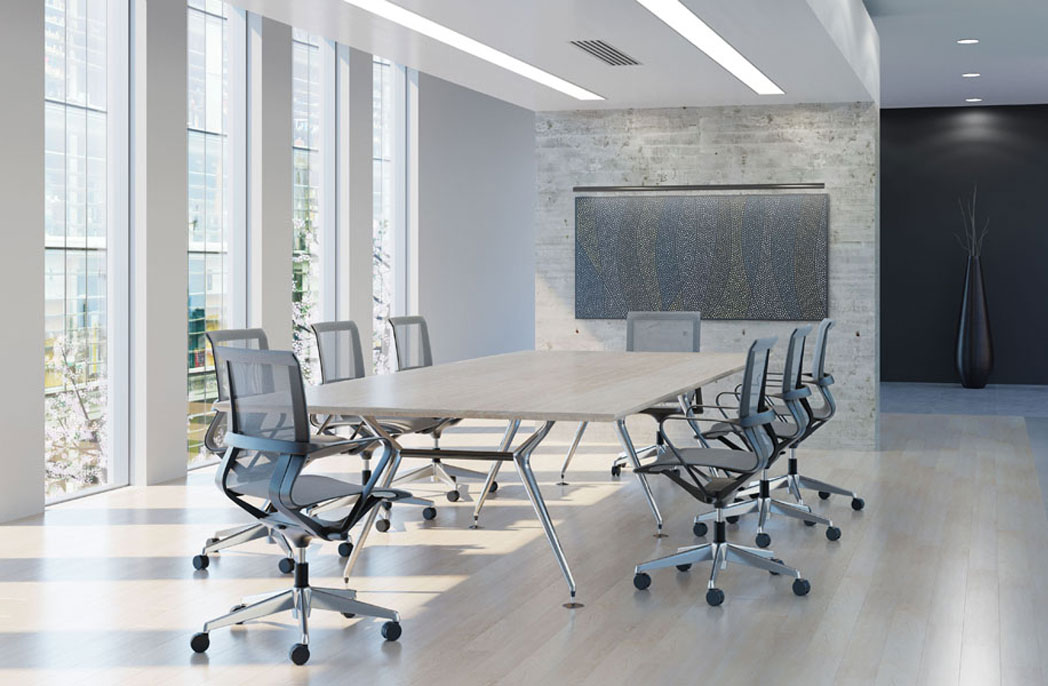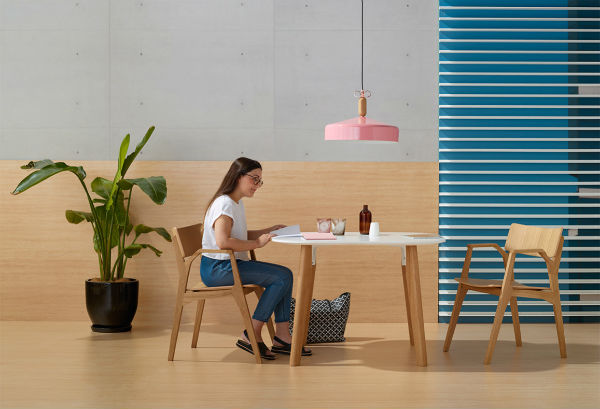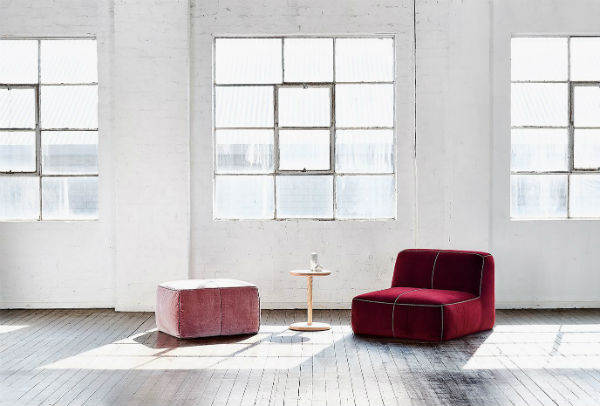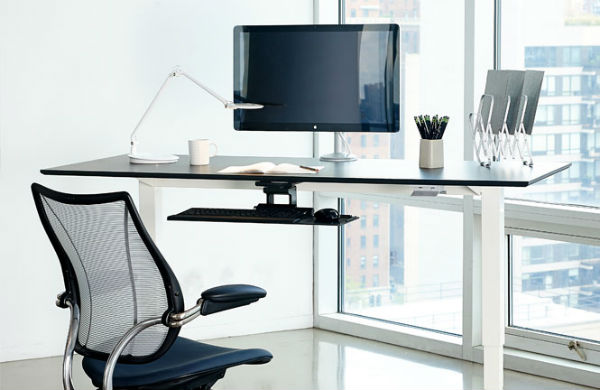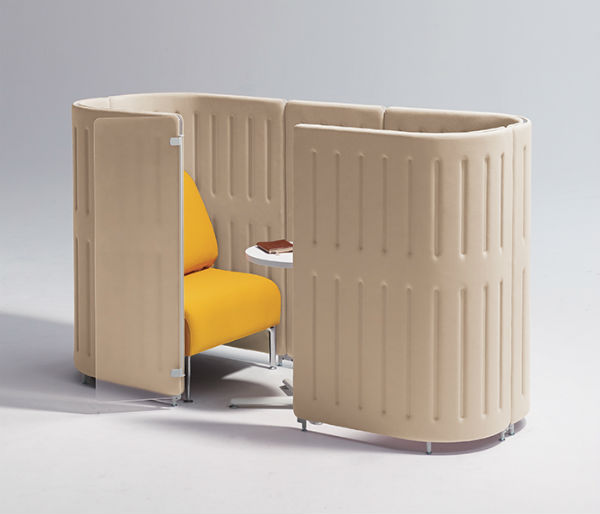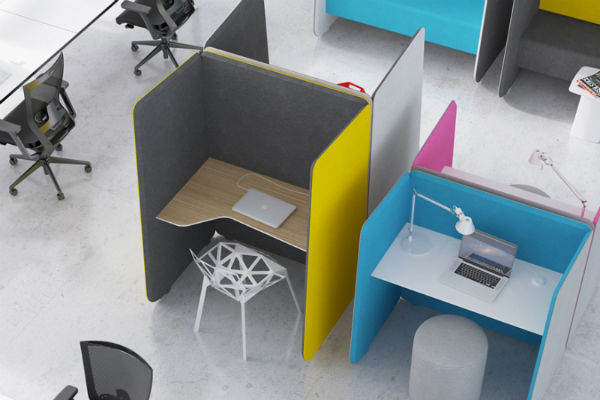
The modern workplace
The modern workplace
Share
Image above, Softscape by Helen Kontouris at Stylecraft. Article by Susan Muldowney.
This article originally appeared in inside 93 – available now on newsstands, or digitally through Zinio.
If mobile technology means we can work from anywhere, why bother going into an office? The contingent workforce is on the rise, flexibility is a greater expectation and many employees claim to be more productive when they work from home. If that’s the case, why not create a workplace that resembles it?
Workplace designs are now taking their cues from residential and hospitality environments. Opaque corner offices are becoming a rarity in a push for open communication and transparent governance. Grey pod farms are all but extinct and expansive open plan offices can lack a balance between collaboration and concentration. The new focus of workplace design is movement, comfort and enhanced productivity, and furniture is being designed to promote this.
ALL THE COMFORTS OF HOME
People naturally feel more relaxed at home. Ergonomics will always be important, but workplace furniture is becoming playful too. Zenith’s Hang Loose swing, launched last year, is a perfect example. “While it might seem a little gimmicky, as soon as you sit in it, it takes away the cares of the world,” says Celia Quattrociocchi, marketing and product manager with Zenith. “If you’re having a stressful morning and you need to get away from your desk, you can sit in the swing and gently rock back and forth and it has such a relaxing effect.”
Anton Schiavello, director of Schiavello International, says residential references in workplace furniture make offices more relatable. “The kind of furniture you have in a workplace can make people come to work more willingly,” he says. “Furniture with a residential feel just makes people feel more comfortable.”
Schiavello’s Parley table is designed with this in mind. Although it is used for meetings, its soft natural timber finish and rounded edges give it a distinctly residential feel. “It feels like a dining table more than anything else,” says Schiavello.
Tony Russell, brand director of Stylecraft, says companies also want workplace furniture with a residential aesthetic as it promotes productivity. “We enjoy our time at home or out at a bar or café more than we do in a traditional office environment,” he says. “These places tend to make us happier and idea generation comes to the fore. I think our work and social spaces are blurring.”
Stylecraft’s Guell modular seating system by Derlot Editions reflects this trend. The flexible design is ideal for collaborative breakout areas in a workplace and would appear equally at home in a café.
While workplace furniture is becoming more casual and relaxed, it must still comply with health and safety requirements and be of a high commercial grade. Quattrociocchi cites Zenith’s All Sorts collection of ottomans and lounges as an example. “When we developed the range, we knew that it had to be very structured and wouldn’t collapse like a beanbag, because corporate environments don’t want to deal with that level of maintenance,” she explains. “You can’t just take a piece of residential furniture and place it in a commercial environment.”
WORKPLACES ON THE MOVE
The best workplaces today are agile, adaptable and healthy. They are designed to get people moving. Advances in technology mean we’re no longer tethered to a desk and the health benefits of regular movement at work have been well-documented. Smart workstations provide the choice of sitting or standing while you work – some even come with apps to alert you when it’s time to get on your feet.
UCI, which specialises in commercial furniture and fitouts, knows all about height adjustable furniture. The company used to manufacture hospital beds 15 years ago and applies similar electronic actuator technology to its sit-to-stand desks today.
“We’ve noticed that sit-to-stand desks are becoming a priority in workplaces,” says Mike Radda, CEO of UCI, which specialises in flexible designs such as the Interchange electric sit-stand workstation. “We have produced apps that tell you when it’s time to stand up, so rather than a Fitbit, you can have a kind of ‘fit desk’. It’s important not to stand at your desk all day and we’re actually part of some research into this at the moment, but the best workstations are now about choice and promoting well-being.”
Humanscale is another company passionate about integrated technology and ergonomics and these are showcased in its MConnect, Quick Stand and Horizon products. Kirsty Angere, ergonomist with Humanscale, says, “We are most certainly going the right way when it comes to incorporating technology and ergonomics into our workstations. However, we are seeing that many of our clients are going down the agile working route. Agile working is about bringing people, processes, connectivity and technology together, allowing for flexible working patterns and office space.”
Katerina Ali, marketing and executive manager with Australian Workstation Manufacturers (AWM), has also noticed an increase in demand for sit-to-stand workstations, such the company’s Alto collection. “Engineering has come a long way and the electronics are really the most important feature,” she says. “No one really wants to be bothered winding a desk up or down and the cheap versions can wobble.”
ALL TOGETHER NOW
Agile workplace designs break down hierarchies and create greater transparency, which can send powerful messages to both employees and clients. “People who may not have had direct access to their line manager in the past are now more likely to be sharing communal tables, so there are more opportunities for open communication in agile work environments,” says Stylecraft’s Tony Russell.
Collaborative spaces and breakout areas are designed to enhance both creativity and productivity. “The stuffy boardrooms are still there, but meeting rooms are being replaced by breakout areas because they feel like a more natural way of getting together and reference a lounge area,” adds AWM’s Katerina Ali.
Herman Miller’s Living Office environment, where products are designed to support the needs and activities of an organisation, also provides for the many requirements of today’s workplace. Louisa Moran, marketing manager at Herman Miller Australia, New Zealand, says that the aim is to, “Bring humanity into the workplace by providing a choice of furniture settings to support the type of work taking place throughout the day, from informal catch-ups on lounge settings to sharing concepts in collaborative meeting settings conveniently located near flexible desking.”
Of course, those who do sit in a chair at a desk require maximum comfort and there are advanced ergonomic solutions available. For example, Wilkhahn’s IN chair allows for 360-degree movement and provides increased and adjustable lumbar support that helps reduce back pain.
Workplace furniture can bring people together, but it must also cater to private time. “You can’t be in collaboration at all times,” adds UCI’s Mike Radda. “Furniture needs to allow for a balance so there are opportunities for quiet focus.”
UCI’s Muffle pod features a desk and streamlined contours that gently surrounds a worker to shut out noise and distractions. AWM’s Nook design resembles a private booth, while Zenith’s Cloud system gently cushions workers from distraction through an organic pod formation.
Acoustics are also an important consideration in open work environments. Schiavello’s Focus booths, for example, feature high curved panels that create a shield from the surrounding workplace and absorb noise.
Stylecraft’s Tony Russell notes that workplace furniture should also be flexible enough to respond to varying workplace needs. Stylecraft’s Softscape modular lounge is ideal for breakout spaces, reception areas or quiet work zones due to the privacy screen that can be affixed to the upholstered modules. “It’s such a flexible design – it can be configured for meetings or for quiet, independent work,” says Russell.
Schiavello’s Kayt Village range also provides a multipurpose space with surrounding walls that dampen background noise. “They provide focused settings, but can also be used for collaboration,” says Anton Schiavello.
Workplace designs now promote comfort and well-being and this all translates to the goal of greater productivity. “Companies like Google may have been among the first to introduce the comfortable and fun environments,” says Zenith’s Celia Quattrociocchi, “but the root of that is keeping employees happy and at work for longer.”
You Might also Like
